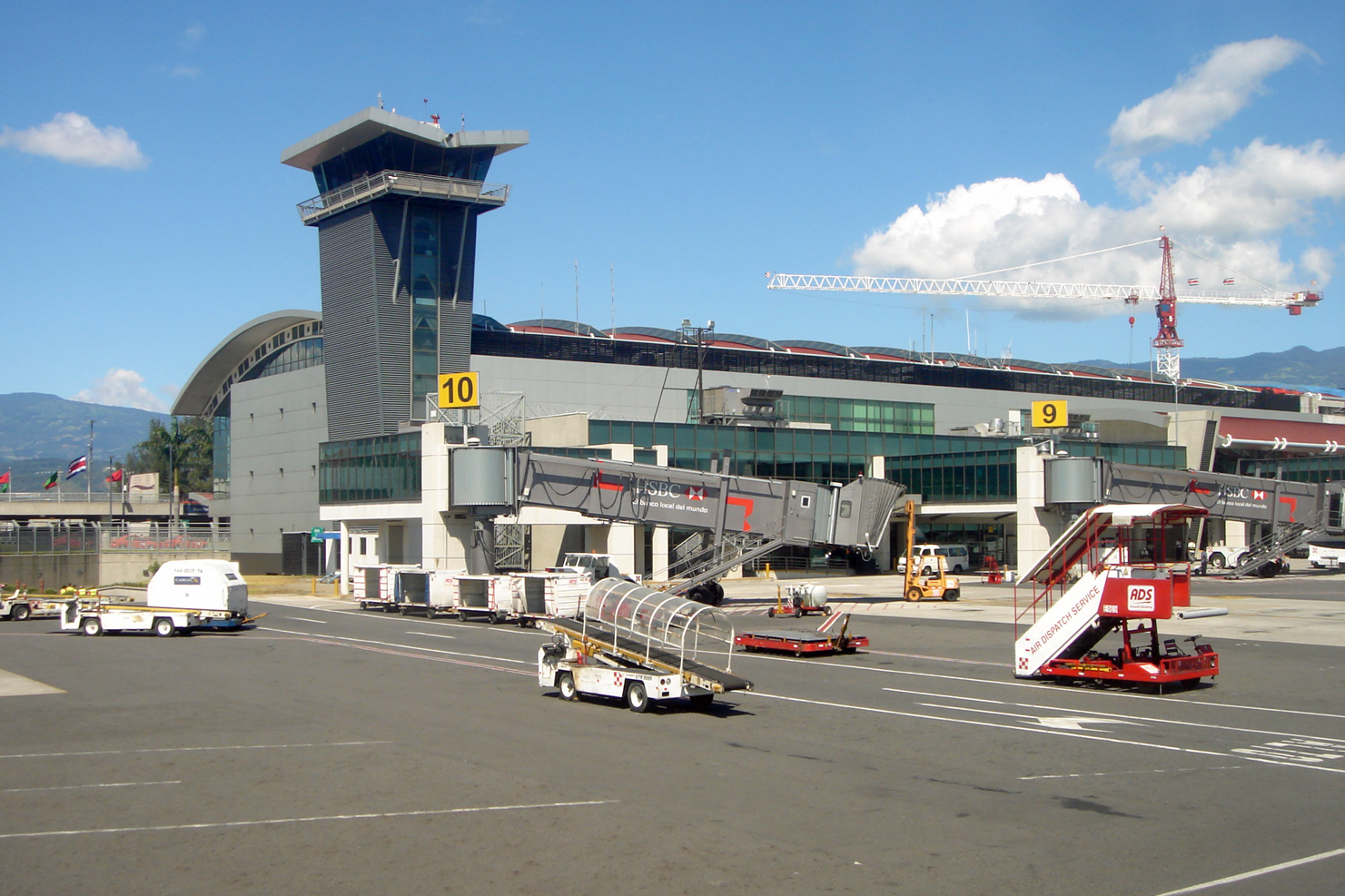|
LACSA Flight 628
LACSA Flight 628 was a scheduled passenger flight operated by a Boeing 727-100 serving Líneas Aéreas Costarricences. On 23 May 1988, the aircraft crashed while attempting takeoff at Juan Santamaría International Airport in San José, Costa Rica. All 24 occupants on board survived the crash. Aircraft The aircraft was a Boeing 727-100 (model 727-22) built in 1965, serial number 18856, registered TI-LRC and powered by two Pratt & Whitney JT8D-7B engines. The aircraft was delivered to Líneas Aéreas Costarricences (LACSA) in May 1987, and had accumulated 50,624 hours and 40,903 flight cycles before being decommissioned following the accident. Passengers and crew On board were 16 passengers and 8 crew members: three pilots and five flight attendants. Captain Armando D'Ambrossio Morales, co-pilot Armando Rojas Aguilar, and flight engineer Héctor Araya Naranjo. Accident The flight was scheduled to fly from Juan Santamaría International Airport in San José, Costa Rica to ... [...More Info...] [...Related Items...] OR: [Wikipedia] [Google] [Baidu] |
Juan Santamaría International Airport
Juan Santamaría International Airport () is the primary airport serving San José, the capital of Costa Rica. The airport is located in Alajuela Province, northwest of downtown San José. It is named after Costa Rica's national hero, Juan Santamaría, a drummer boy who died in 1856 defending his country against forces led by William Walker, an American filibuster. It is the biggest and busiest airport in Costa Rica and second in Central America, transiting more than 5 million passengers per year before COVID. The airport is a hub for Avianca Costa Rica, Costa Rica Green Airways, Sansa Airlines, and Volaris Costa Rica, and a focus city for Avianca El Salvador and Copa Airlines. It was the country's only international gateway for many years, before the opening of the international airport in Liberia, Guanacaste. Both airports have direct flights to North and Central America and Europe, but Juan Santamaría International Airport also serves cities in South America and ... [...More Info...] [...Related Items...] OR: [Wikipedia] [Google] [Baidu] |
Managua, Nicaragua
Managua () is the capital city, capital and largest city of Nicaragua, and one of the List of largest cities in Central America, largest cities in Central America. Located on the shores of Lake Managua, the city had an estimated population of 1,055,247 as of 2020, and a population of 1,401,687 in its metropolitan area. The city also serves as the seat of Managua Department. Founded in 1819, Managua became the national capital in 1852. The city underwent a rapid expansion and urbanization between 1842 and 1930, leading it to become one of the most developed cities in Central America. Several earthquakes have affected the city's growth, especially the 1931 Nicaragua earthquake, 1931 earthquake and the 1972 Nicaragua earthquake, 1972 earthquake, but the city has been rebuilt several times. Today, the city is a major economic hub for both the country and Central America. Etymology There are two possible origins for the name "Managua". It may have originated from the term ''Mana-ahua ... [...More Info...] [...Related Items...] OR: [Wikipedia] [Google] [Baidu] |
Aviation Accidents And Incidents In Costa Rica
Aviation includes the activities surrounding mechanical flight and the aircraft industry. ''Aircraft'' include Airplane, fixed-wing and Helicopter, rotary-wing types, morphable wings, wing-less lifting bodies, as well as Aerostat, lighter-than-air aircraft such as Balloon (aeronautics), hot air balloons and airships. Aviation began in the 18th century with the development of the hot air balloon, an apparatus capable of atmospheric displacement through buoyancy. Clément Ader built the "Ader Éole" in France and made an uncontrolled, powered hop in 1890. This was the first powered aircraft, although it did not achieve controlled flight. Some of the most significant advancements in aviation technology came with the controlled gliding flying of Otto Lilienthal in 1896. A major leap followed with the construction of the ''Wright Flyer'', the first powered airplane by the Wright brothers in the early 1900s. Since that time, aviation has been technologically revolutionized by the ... [...More Info...] [...Related Items...] OR: [Wikipedia] [Google] [Baidu] |


